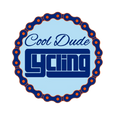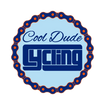When you think of cycling legends, Jan Ullrich’s name looms large—sometimes literally, given his towering 6’2” frame and the dramatic arcs of his career. Born on December 2, 1973, in Rostock, East Germany, this powerhouse rider became the first German to win the Tour de France in 1997, a feat that sparked a cycling boom in his homeland. But Ullrich’s story isn’t just about yellow jerseys and podiums—it’s a rollercoaster of brilliance, controversy, and quirky moments, like the infamous 2003 Tour de Vache cow incident. From his East German beginnings to doping scandals and a very public struggle with cocaine, his journey is as compelling as it is chaotic. This tale dives into his victories, the cow that nearly derailed him, and the personal battles that shaped a fallen giant into a figure of resilience.
From East German Roots to Cycling Royalty
Jan Ullrich’s early life reads like a Cold War sports fable. Growing up in Rostock under East German rule, he was spotted as a cycling prodigy and sent to a sports academy in Berlin. The fall of the Berlin Wall in 1989 opened new horizons, and by 1993, he won the Amateur World Road Championship in Oslo, catching the eye of the Telekom team. Turning pro in 1995, he hit the ground running, finishing second in the 1996 Tour de France behind teammate Bjarne Riis, a result later tainted by doping admissions.

The 1997 Tour was his coronation. At just 23, Ullrich dominated with a mix of climbing strength and time-trial mastery, winning by over nine minutes. His victory, sealed with a stage win at Andorra-Arcalis, turned him into a national hero, with kids across Germany trading soccer balls for bikes. He followed it with Olympic gold in the 2000 Sydney road race and silver in the time trial, cementing his status. Yet, beneath the triumphs lurked a pattern of inconsistency—winter weight gain and a laid-back approach often left him scrambling to peak, a trait that frustrated fans and coaches alike.
The Tour de Vache: A Bovine Detour
One of Ullrich’s most memorable moments came not from a pedal stroke but a cow’s unexpected cameo. During the 2003 Tour de France, Stage 8 in the Pyrenees, Ullrich was battling Lance Armstrong in a neck-and-neck duel when a cow wandered onto the course. Swerving to avoid a collision, he lost momentum, and the peloton chuckled as he regained composure. The incident, dubbed the “Tour de Vache” by amused commentators, became a viral anecdote, with footage showing Ullrich glaring at the bovine as if it were a rival.

The moment reflected his 2003 campaign—a year of near-misses. He finished third, his best against Armstrong since 2000, but the cow story softened his image. Teammates later joked he should’ve sued for “unfair competition,” while Ullrich quipped, “At least I didn’t crash into it!” This lighthearted detour contrasted with the intense rivalry, offering fans a glimpse of his human side amid a season where he pushed Armstrong to the limit on climbs like Luz-Ardiden.
Victories and the Shadow of Doping
Ullrich’s palmarès is a testament to his talent. Beyond the 1997 Tour, he won the 1999 Vuelta a España, a grueling three-week test, and claimed the HEW Cyclassics in 1997 before a home crowd in Hamburg. His Olympic success and multiple Tour podiums (second in 1998, 2000, 2001, 2003) showcased a rider who could climb, time trial, and sprint when fit. Yet, doping allegations shadowed every achievement.

The Operación Puerto scandal in 2006 was the tipping point. Spanish police uncovered a blood-doping ring led by Dr. Eufemiano Fuentes, with Ullrich’s name linked to coded samples. Banned from that year’s Tour before it started, his career unraveled. In 2012, the Court of Arbitration for Sport retroactively banned him for two years and stripped results from 2005 onward. His 1997 Tour title remains intact due to a 10-year statute of limitations, but in 2023, he admitted doping since 1996, including before his big win. “I was young and naive, part of a system,” he said, echoing a common excuse that didn’t erase the stain.
Cocaine Struggles and Personal Downfall
Ullrich’s post-cycling life took a darker turn, with cocaine use becoming a public battle. After retiring in 2007, he moved to Mallorca, where isolation and mental health struggles led to addiction. By 2018, reports emerged of him consuming up to two bottles of whiskey daily and using cocaine, a mix he later called “monstrous” in a 2023 Amazon Prime documentary, Der Gejagte (The Hunted). That year, he was arrested twice—once for breaking into neighbor Til Schweiger’s home and again for assaulting an escort in Frankfurt, an incident tied to his substance abuse.
The cocaine spiral peaked when he admitted being “close to death,” a stark contrast to his athletic prime. Lance Armstrong, once a fierce rival, flew to Germany to help, and the two reconciled, riding together in Mallorca. Ullrich sought rehab, crediting Armstrong and family for his recovery. “It turned me into a monster, but I’m hungry for life again,” he reflected, a raw confession that humanized his fall while highlighting his fight back.
Anecdotes and Off-Bike Charm
Ullrich’s life is peppered with quirky tales. During the 2000 Sydney Olympics, he celebrated his gold medal with a spontaneous dip in the hotel pool, fully clothed, delighting teammates. Another story from the 1997 Tour recalls him stopping mid-stage to help a stranded fan fix a flat tire, a gesture that won hearts despite the race clock ticking. His laid-back nature shone through in interviews—once asked about training, he grinned, “I ride when I feel like it,” a quip that frustrated coaches but endeared him to fans.
His rivalry with Armstrong added drama. In 2001, after finishing second again, Ullrich famously tossed his water bottle at Armstrong in jest during a press conference, a moment caught on camera that broke the tension. These anecdotes paint a picture of a rider who balanced intensity with a playful spirit, even as doping clouds gathered.
Legacy of a Complex Champion
Ullrich’s legacy is a paradox. His 1997 Tour win and Olympic glory mark him as one of Germany’s greatest cyclists, yet doping and personal struggles dim the shine. The Tour de Vache incident, replayed on social media with captions like “When cows outride champs,” keeps his story alive with humor. His admission of cocaine use and doping, detailed in Der Gejagte, offers a candid look at the era’s pressures, resonating with fans who see him as a flawed hero.
Today, living in southern Germany with a new partner, Ullrich runs Re:Tour, a cycling travel company, and reconnects with his children. The sport has moved on, with stricter rules and advanced testing, but Ullrich’s tale reminds us of cycling’s wilder days. His cow dodge, doping confessions, and recovery journey blend into a narrative of triumph, turmoil, and redemption—a legacy that’s as human as it is legendary.
In a world of data-driven riders, Jan Ullrich stands out as a throwback, a giant whose highs and lows shaped cycling’s story. Whether dodging bovines or battling demons, he left an indelible mark, proving that even fallen kings can rise again.







